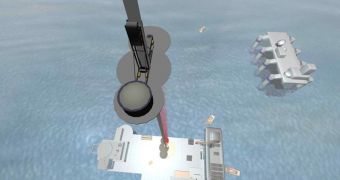It might sound strange, but there are some scientists (not few) who propose building a space elevator to take people to space on a cable. That would eliminate the need for rockets, or at least today's spaceships.
This would be the supreme high-rise project in the world. The concept of the space elevator is actually not that new, appearing in 1895 when Russian scientist Konstantin Tsiolkovsky was inspired by the Eiffel Tower in Paris to consider a tower that reached all the way into space. The scientists claimed we could one day place a "celestial castle" at the end of a spindle-shaped cable, with the "castle" orbiting Earth in a geosynchronous orbit.
No more rockets or bone jarring liftoffs! The elevator will ride up a 62,000-mile (100,000-kilometer) long cable and would pull heavy loads up into space while experiencing no large launch forces and slowly climbing from one atmosphere to a vacuum.
From there, a trip to the Moon, Mars or Venus will be piece of cake, since the most important problem, that of defeating Earth's gravity, would have been overcome.
Physicist Bradley Edwards of Eureka Scientific in Berkeley, California, is working on heavy lifting design in Seattle, Washington and is one of the adepts of the space elevator. "Even though the challenges to bring the space elevator to reality are substantial, there are no physical or economic reasons why it can't be built in our lifetime."
To prove that the idea is more science than fiction, he received a grant from NASA's Institute for Advanced Concepts (NIAC) programs, who wanted to see if such a design were feasible. "I'm convinced that the space elevator is practical and doable. In 12 years, we could be launching tons of payload every three days, at just a little over a couple hundred dollars a pound," he said.
"In 15 years we could have a dozen cables running full Steam putting 50 tons in space every day for even less, including upper middle class individuals wanting a joyride into space. Now I just need the $5 billion, Edwards added".
There is a variety of tether designs. Almost every design includes a base station, a cable, climbers, and a counterweight, and the most likely material for constructing such a cable would be the carbon nanotubes.
The main components of the space elevator would be a cable anchored to the Earth's surface, reaching into space. A counterweight would be attached at the end, and inertia would ensure that the cable remains stretched out, countering the gravitational pull on the lower sections, thus allowing the elevator to remain in geostationary orbit. Once beyond the gravitational midpoint, carriage would be accelerated further by the planet's rotation.

 14 DAY TRIAL //
14 DAY TRIAL // 
